Urakami Cathedral

Beez Neez now Chy Whella
Big Bear and Pepe Millard
Sun 5 Nov 2017 23:37
|
Urakami Cathedral (St. Mary's Cathedral),
Nagasaki
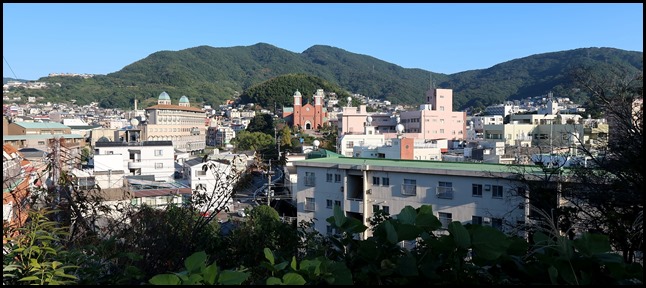   We
left the Peace Park, following the signs for the Urakami
Cathedral. Standing across the valley, a simple building with clean lines
and modest dignity, off we went.
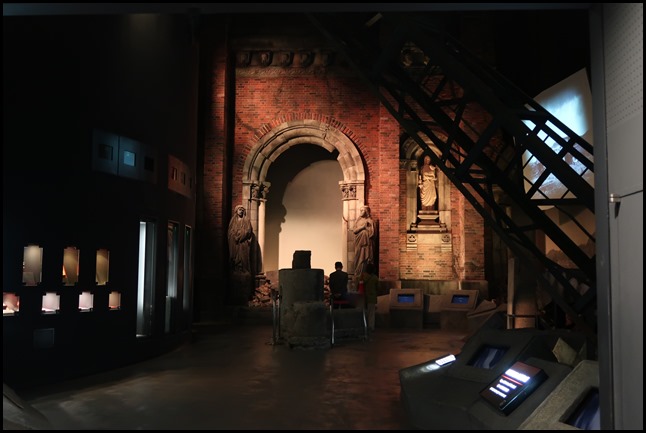 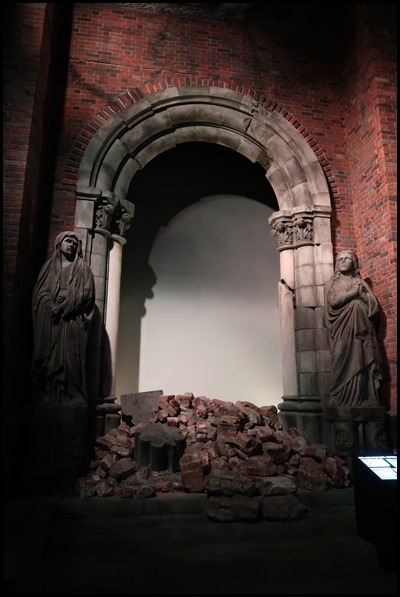 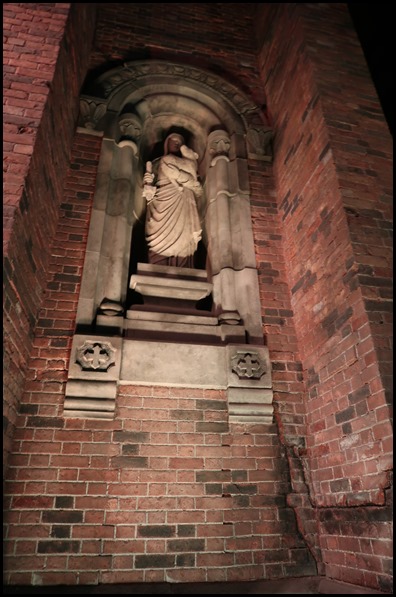 As
we walked in to the A-Bomb Museum we stood to take in the dramatic piece in
front of us. The Wall of Urakami Cathedral after the
Atomic Bombing (reproduction): One of the largest Catholic churches in
East Asia at the time, Urakami Cathedral was located only some 500 meters
northeast of the hypocenter and suffered almost complete destruction by the
atomic bomb.
 This
is a reproduction of part of the wall that remained
standing on the southern side of the ruins (indicated by arrows in the
photograph). The statues were blackened by the heat rays and fire, and part of
the stone pillars were pushed out of alignment. The red arrow in the photograph
indicates the part of the wall reproduced here, while the black arrow indicates
the part relocated to Peace Park (near the Hypocenter Monolith) and still
standing today.
 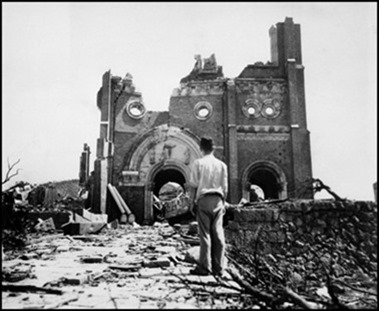 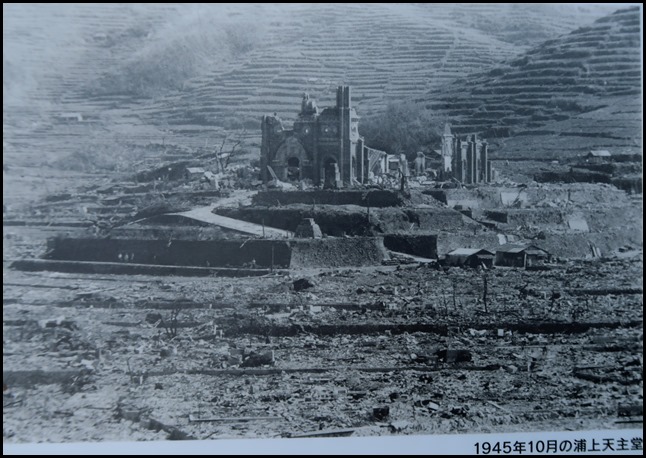 In
1867, the Catholics of Urakami who had returned after having been banished from
the city (they had been persecuted from 1587 to 1873), purchased the
piece of land where the residence of the former representative of Nagasaki
village stood and in 1880 built a temporary church there. In 1895, the parish
priest, Father Theodore Fraineu, started construction work on the red brick
Romanesque cathedral. A consecration ceremony was held in 1914, and later in
1925 the belfry-towers were finally completed. At that time the cathedral was
said to be the largest in Asia.
   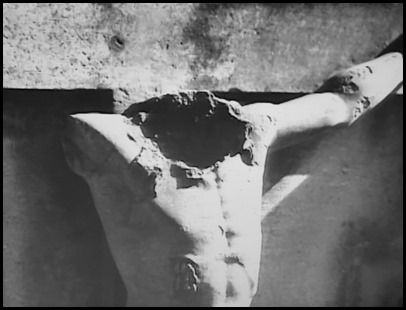 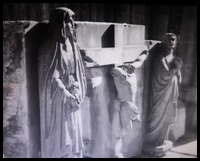  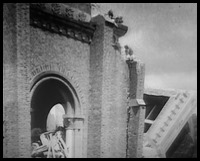  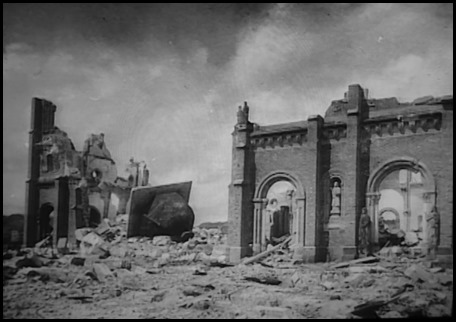 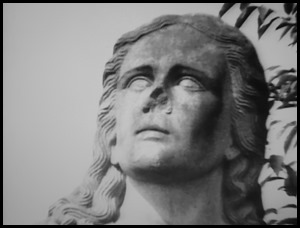  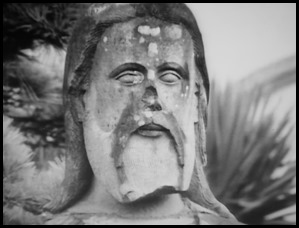 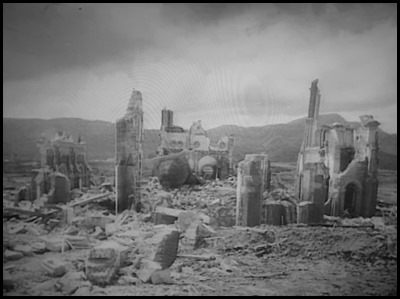 Pictures
we took of the cathedral in the A-Bomb Museum.
  At the bottom of the slope leading up to the cathedral, a
steel information board.
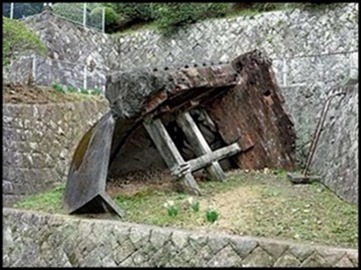  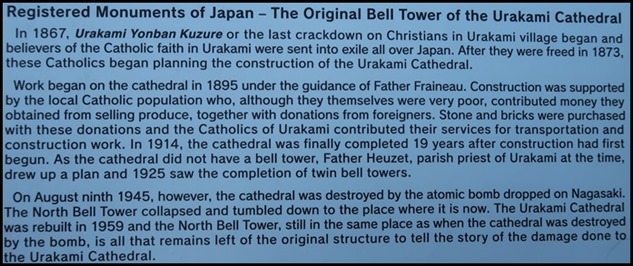 A
path to the left took us to the fallen bell tower
(weighing 50 tons) and it’s information board.
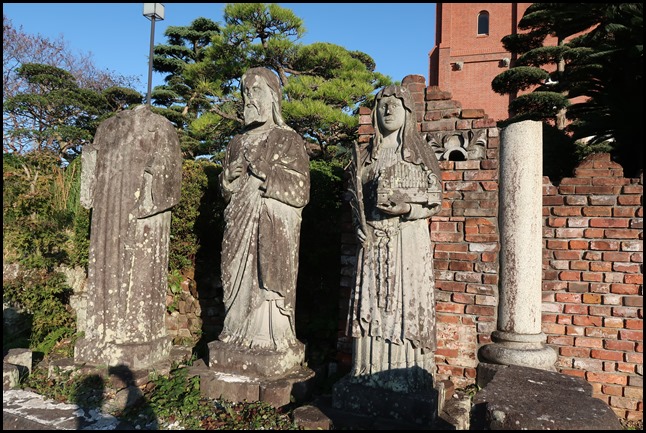 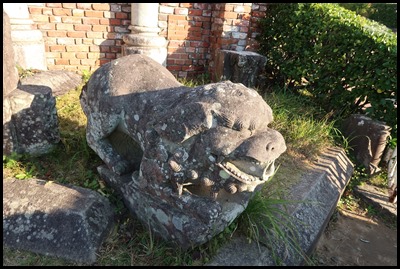  Below
the cathedral there is a little yard filled with original bomb-damaged statues.
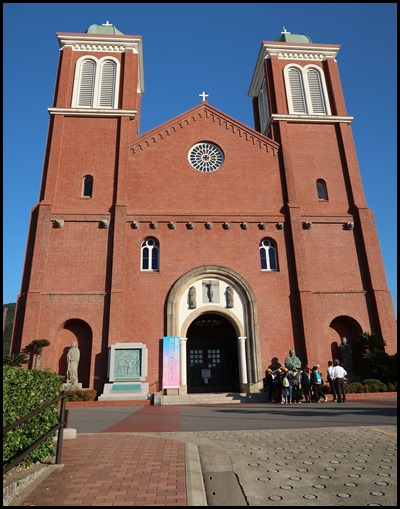   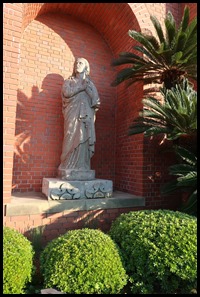 Urakami
Cathedral. Rebuilt in 1959 after a debate between the
parishioners and the city government, who originally wanted to preserve the
ruins. Renovated for the visit of Pope John Paul II.
  We
settled in a pew. Looking toward the altar and back to the organ loft.
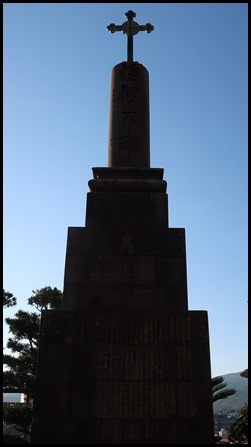  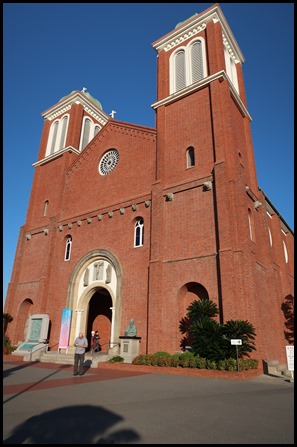 I
bimbled around the outside while
Bear found out which way we needed to head to find the one-legged
torii.
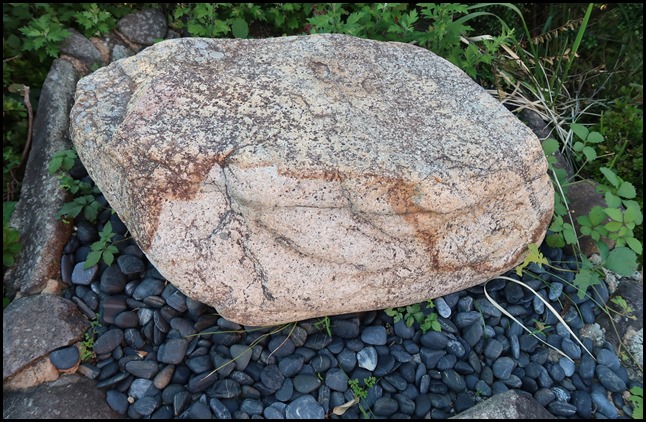 The
Torture Stone
Saint
Francis Xavier brought Christianity to Japan in 1549. The ruler of Japan at the
time accepted it and many Japanese people became Christians. However, in the
years that followed, two rulers, Hideyoshi Toyotomi, 1536-1598, and Leyasu
Tokugawa, 1542-1616, both feared the rapid increase in Christian worshippers
would harm their political policies. Therefore they each officially banned
Christianity from Japan which began centuries of brutilization and religious
persecution. Christians could not confess their religious beliefs in public and
had to hand down their faith to their children secretly for about 300
years.
Japan’s
long policy of isolation from foreign influences included a ban on overseas
travel, as well as limitations in trade with China and The Netherlands. However
when the American admiral, Perry, made a sudden visit to Japan with his fleet in
the 19th century, it paved the way for change. Soon after his visit, Japan
opened its borders, the old government collapsed and a new Japanese government
was established. However, the official policy to ban Christianity was still held
firmly in place.
In
1865, some Catholics in the Urakami area visited a missionary, Priest Petitjean,
in Urakami Cathedral. This cathedral is known as Japan’s 26 Martyrs’ Memorial
Church (own blog). It had been newly built in Oura, an area in Nagasaki
where many foreigners resided. The Catholics fearlessly confessed to the priest
that not only they but all of the villagers of Urakami were in fact
Christians. “We have the same faith as you do”, they bravely declared, despite
the continuing ban on Christianity.
However,
this led to the “Urakami Yonban Kozure,” the exile of all Urakami Catholics,
which was the last persecution against Christians in
Japan.
From
1868, the government systematically seized 3,460 of the Urakami villagers and
banished them to the far corners of Japan: north to south, Toyama Prefecture to
Kagoshima Prefecture. In addition, the government continued to admonish and to
brutally torture the Christians to force them to change their
faith.
One
example was the large stepping stone in the courtyard of Iwakuni Premise prison
in Hagi, Yamaguchi Prefecture. This stone was called the “Torture Stone.”
Christians exiled in Hagi were forced to sit on the stone as punishment. The
torture was indescribably severe. A 22-year-old woman, Tsuru, was one such
victim. She was stripped to the waist on a bleak winter’s day and compelled to
sit on her heels on the stone for 18 cruel days. After a week had passed, she
was buried in the heavy snow and finally lost consciousness. Still she refused
to repent for her belief in the Christian faith.
In
February, 1873, the government abolished the Christianity Prohibition Policy,
which had lasted for about 262 years. This decision was influenced by Western
consensus to oppose depriving freedom of conscience and faith. In the spring of
1873, Tsuru returned to Urakami with her brave fellow Christians. With deep
sorrow they recalled other associates who were killed for their belief and now
remained sleeping in Hagi. Later on, Tsuru joined the Cross Society, which was
established by Maki Iwanaga, also an exile from the “Urakami Yonban
Kozure” . Iwanaga was sent to Tsuru Island in Okayama Prefecture and
triumphantly returned to Nagasaki after her hardship. Tsuru spent the rest of
her life raising and educating orphans, as well as working in Taino-ura in Goto
and Kono-ura in Sotome. In December 1925, she finished 78 years of religious
service in the Cross Society in Urakami, Nagasaki.
This
stone is a constant reminder to respect our ancestors who unflinchingly held
true to their faith, despite horrific torture and a continuous risk to their
lives. It is an ongoing inspiration for us all to continue holding the beliefs
we deeply value and to keep the faith always.
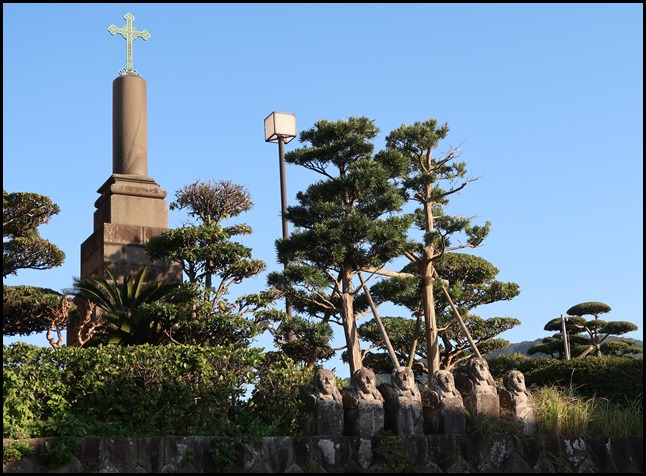 We left the cathedral and its
relics to go in search of the one-legged torii.
ALL IN ALL POIGNANTLY BEAUTIFUL IN ITS SIMPLICITY VERY MOVING INDEED |